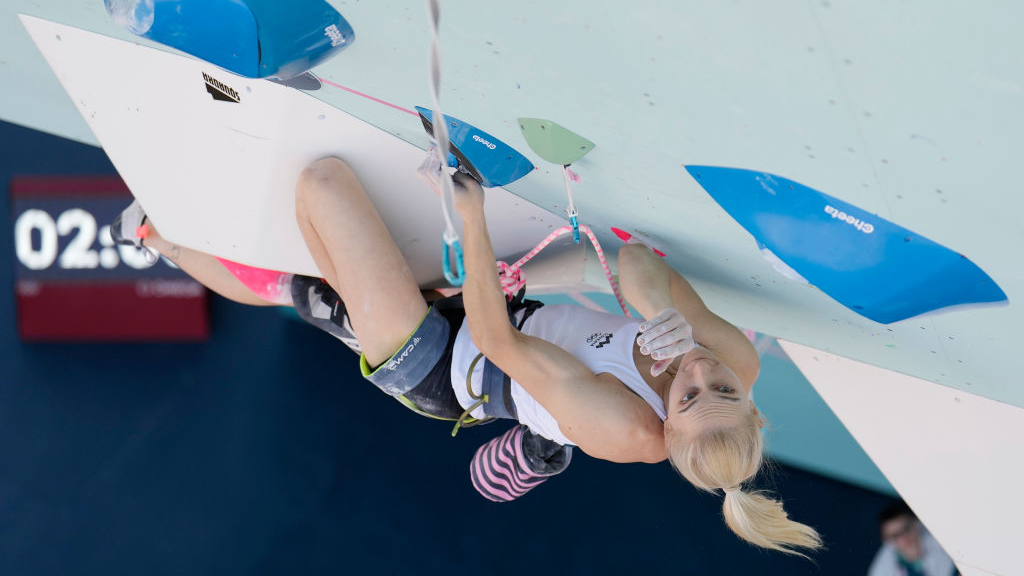Yoga for backpackers: 10 poses you can do on the trail
Our yoga for backpackers sequence lays out 10 simple poses when you get to your campsite to offset the impact of all those miles covered carrying a heavy pack
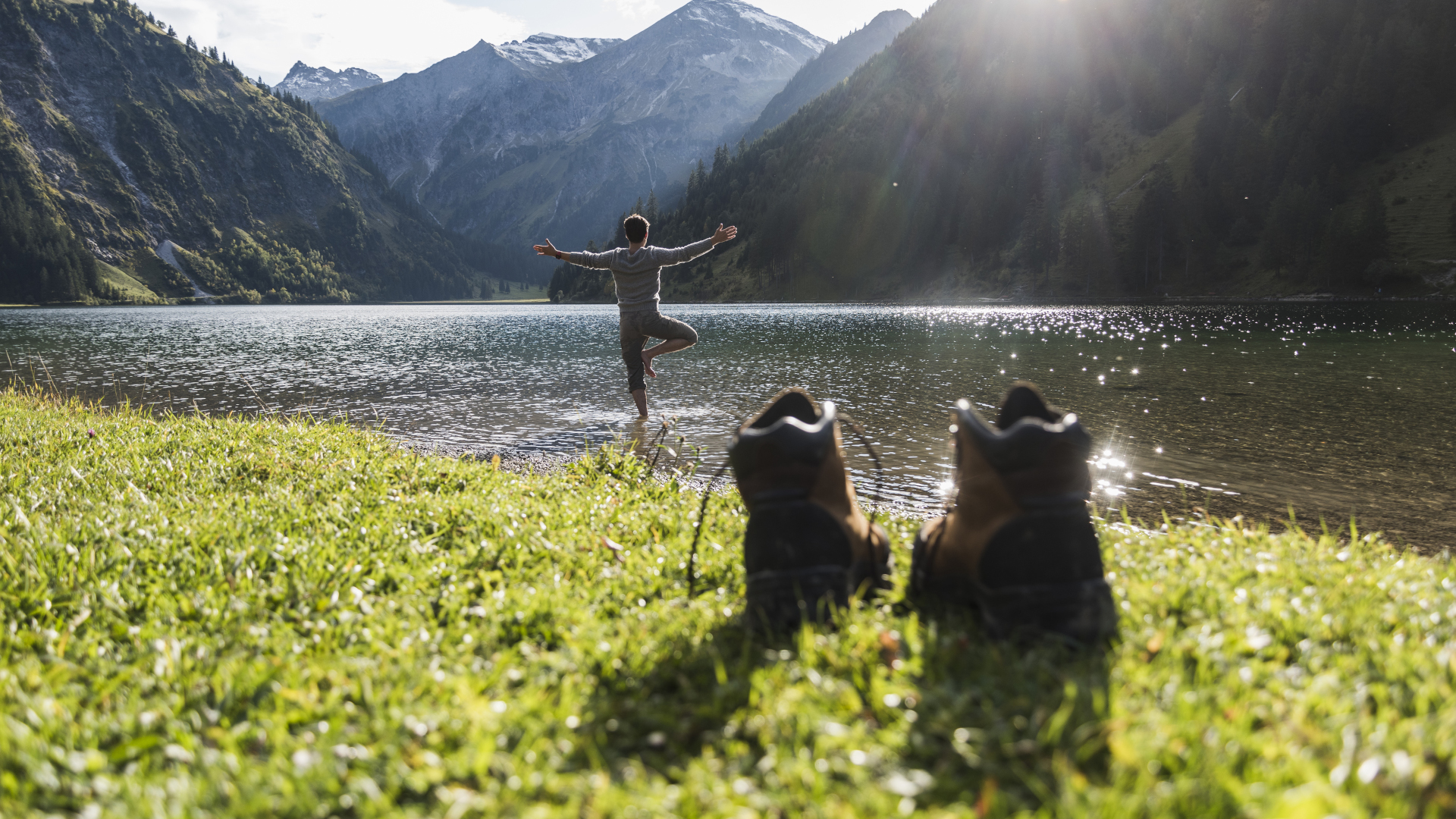
Trekking for miles, tackling steep terrain with your feet jammed into tightly laced hiking boots and carrying everything you need for a couple of nights in the wild on your back is bound to leave your body screaming for a good stretch and our yoga for backpackers sequence has you covered.
Backpacking does wonders for your body and mind, but the combination of long distance walking with weight and the compensation patterns you make to counter the bulk of your backpack means your leg and shoulder muscles will be aching by the time you reach your campsite. You might just want to hop in your hammock at the end of the day, but before you do that, kick your boots off and unroll your sleeping pad to use as a makeshift yoga mat. You'll enjoy a better night’s sleep afterwards and get going with a spring in your step in the morning.
Yoga for backpackers
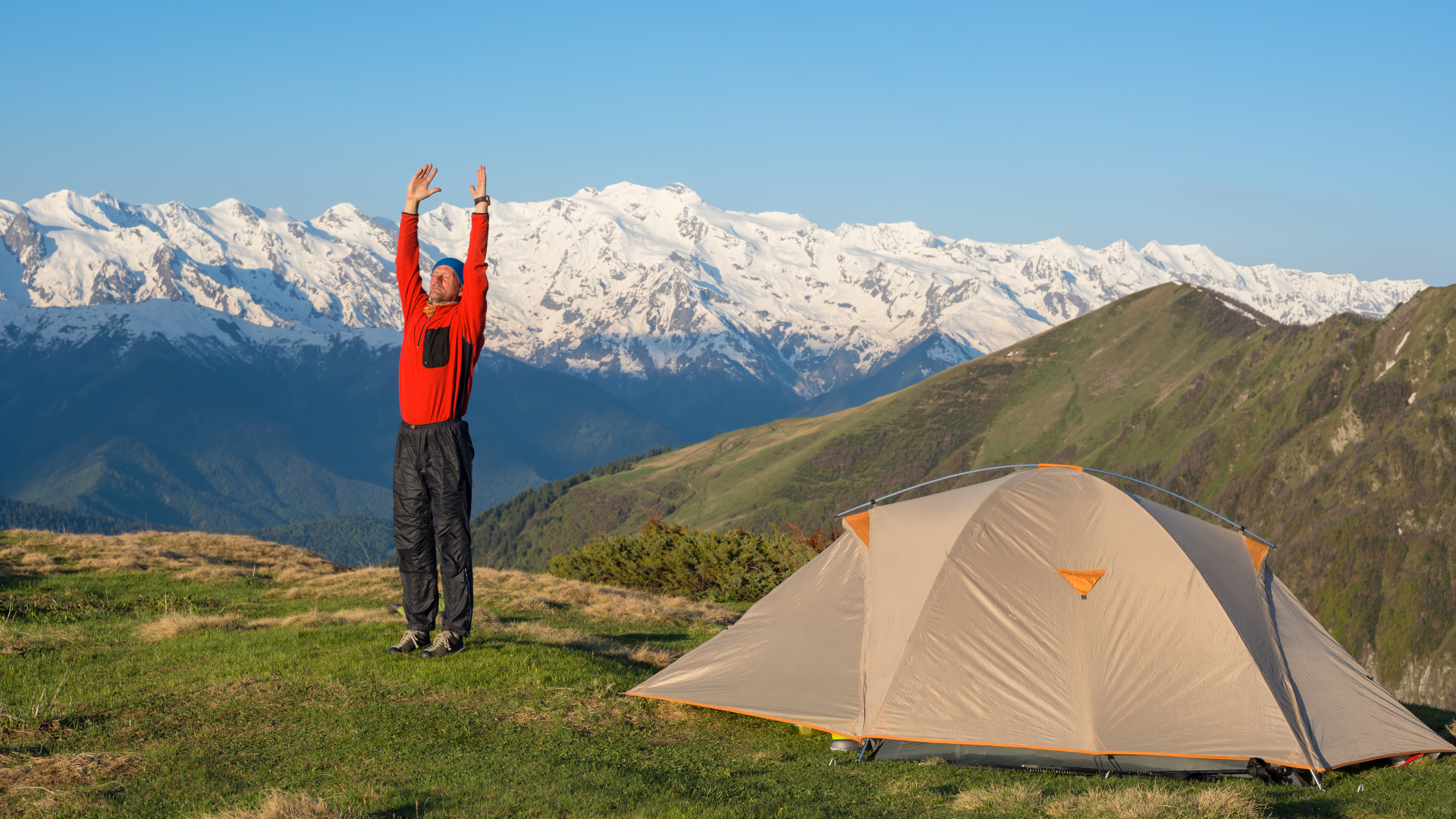
1. Butterfly pose (2-4 minutes)
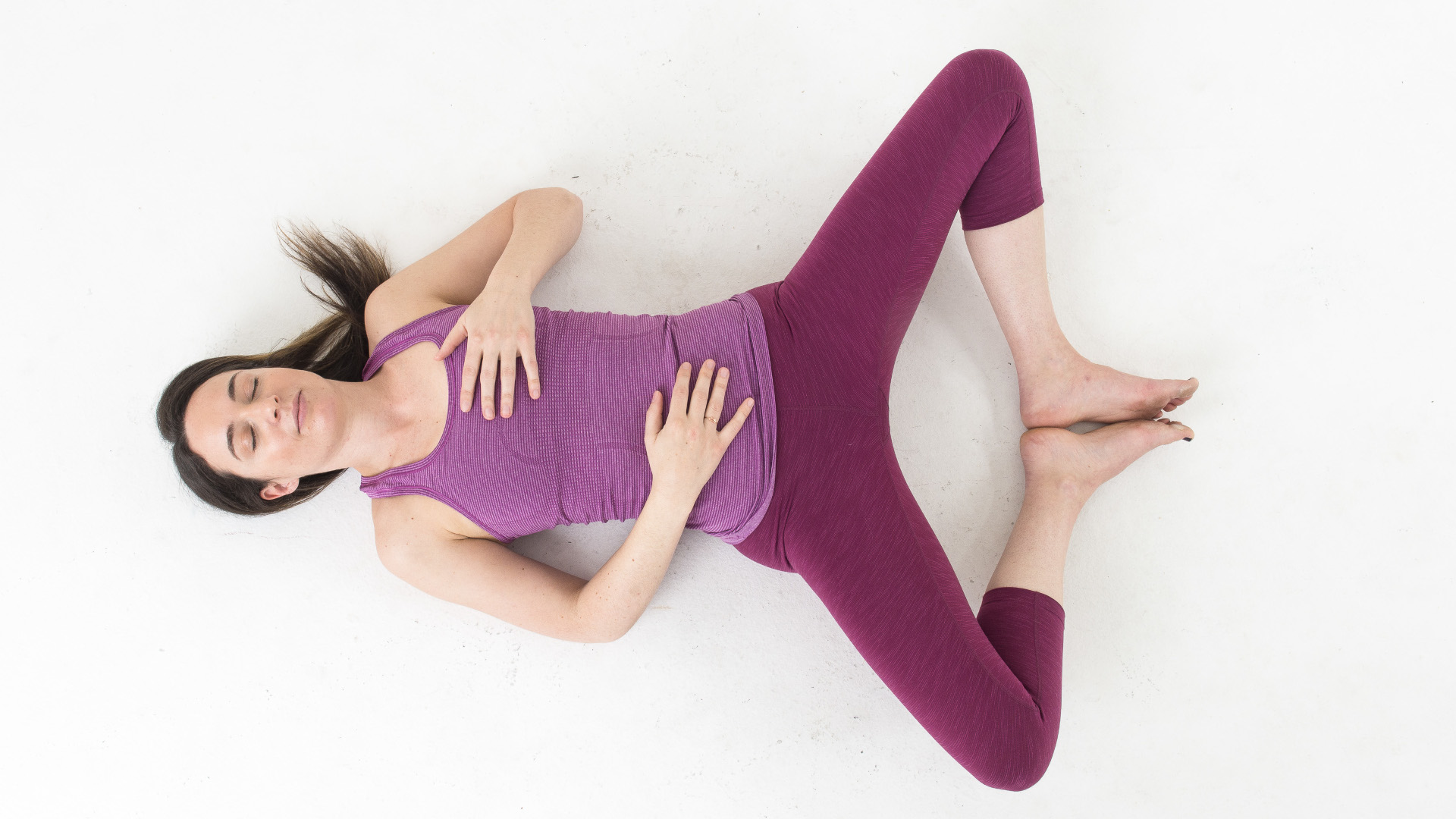
All that walking strengthens your hips in a repetitive flexion/extension pattern so the external rotation of this position will feel like a relief and give a nice stretch of your inner thigh muscles.
Lie down on your back and bend your knees. Place the soles of your feet together and let your knees open wide, so your legs make a diamond shape. Experiment with how far or close you want your heels to be to your pelvis as this will change the sensation. If this feels very intense, you can place some cushioning like a rolled up fleece jacket or your best sleeping bag under your legs for support. Relax here and breathe gently. After a few minutes, hug your knees into your chest.
2. Bridge pose (1 minute)
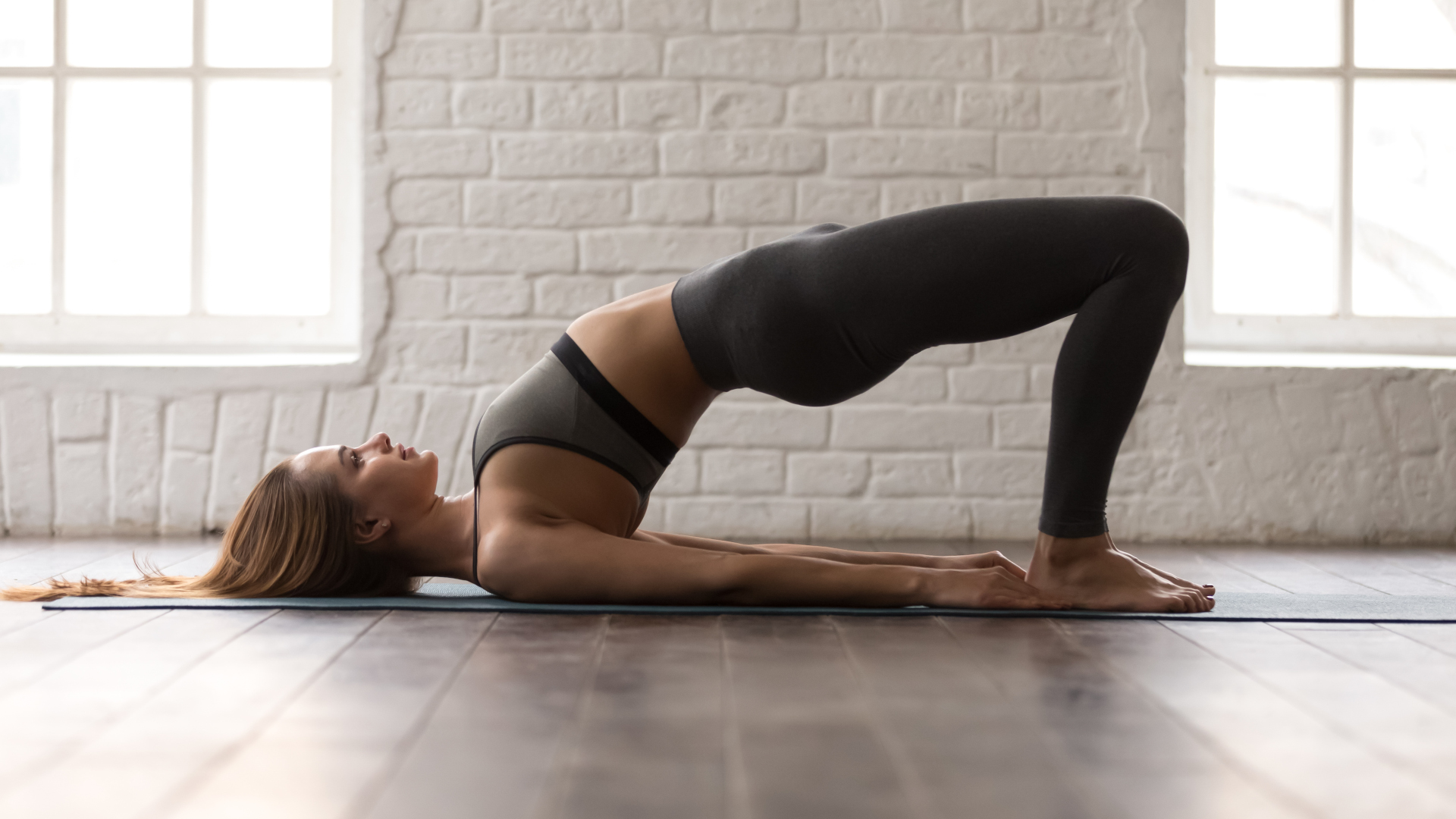
Your hip flexors will definitely be in need for a good stretch after all that climbing, but you also want to keep things low key, so Bridge pose is the answer.
Place your feet down on the ground about hip width and as close to your hips as they'll go. Flatten your low back down into the ground then press down into your feet and lift your hips, gently squeezing your glutes at the top. To add a shoulder and chest stretch, interlace your fingers underneath you and press the outer edges of your hands down. When you're ready to come, release your hands and lower your hips to the ground.
3. Reclining twist (1-2 minutes each side)
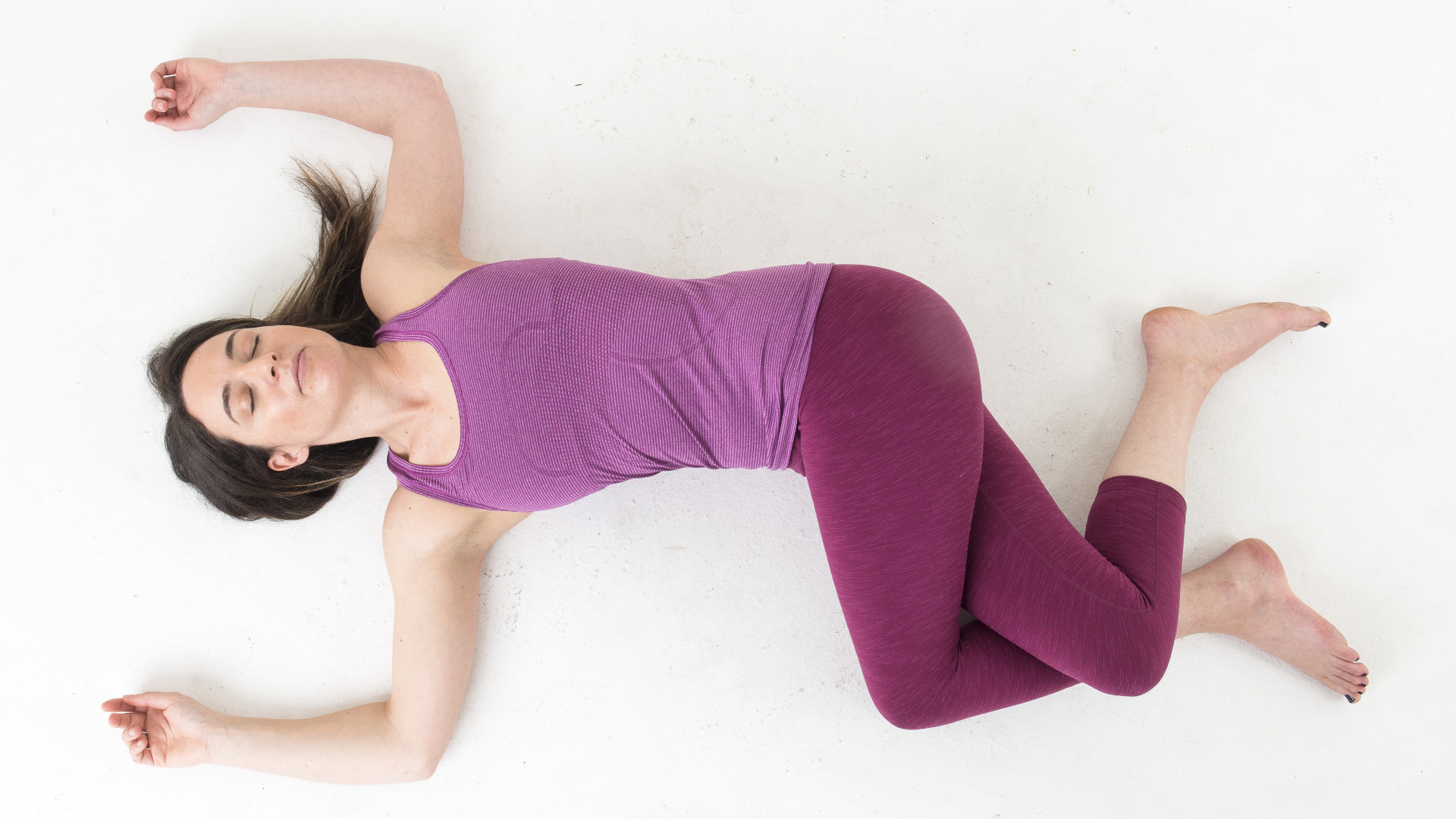
Hiking downhill can really do a number on your lower back. The weight of gravity combined with the impact of each step increases compression of your spine, and add a backpack to this and you might be feeling seriously stiff by the time you reach your campsite.
Advnture Newsletter
All the latest inspiration, tips and guides to help you plan your next Advnture!
One of the best ways to decompress your spine is with a gentle twist, which does the same job as hanging from a bar but is less intense and requires no special apparatus. We like this twist because it also stretches your outer hip muscles like your glutes which can get tight on the trail.
Stay on your back and just cross your right thigh snugly over your left thigh like you’re sitting on a chair. Open your arms out wide, shift your hips a couple of inches to the right, and then bring your knees all the way over to the floor on your left. Don’t worry if your right shoulder lifts up a bit. Once you’re here, relax and let gravity do the work for a minute or two, then change sides.
4. Reclined hamstring stretch (1-2 minutes each side)
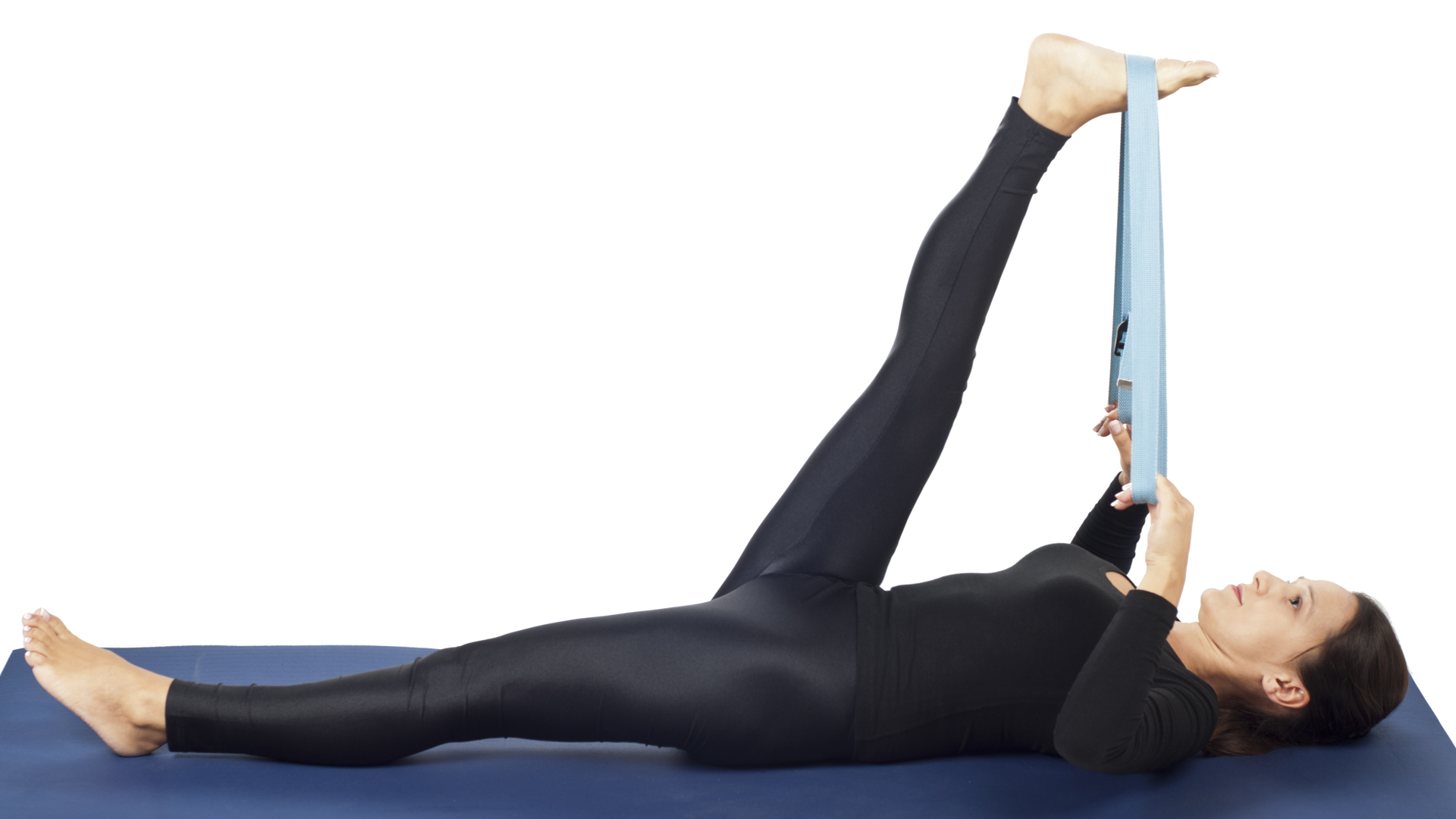
Hiking is superb for strengthening your hamstrings, which work to bend your knees and assist your quads to help propel you uphill. For this stretch, grab something out of your pack that you can use as a strap – a long hiking sock, a belt, some nylon webbing, basically any piece of material that isn’t too stretchy.
Keep your right knee into your chest and place your left foot down on the ground. Wrap your makeshift strap around the sole of your right foot and then straighten your right leg, sending the sole of your foot up towards the sky. Give yourself enough slack that you can straighten your leg completely, then gently pull down on the strap with your hands and press your foot back into the strap. If you point your toes down a little towards your face, you’ll also target your calves and foot muscles here. Stay here and breathe deeply until you feel the stretch in your hamstrings subside, then do it all again on your left side.
5. Neck stretch (30 seconds each side)
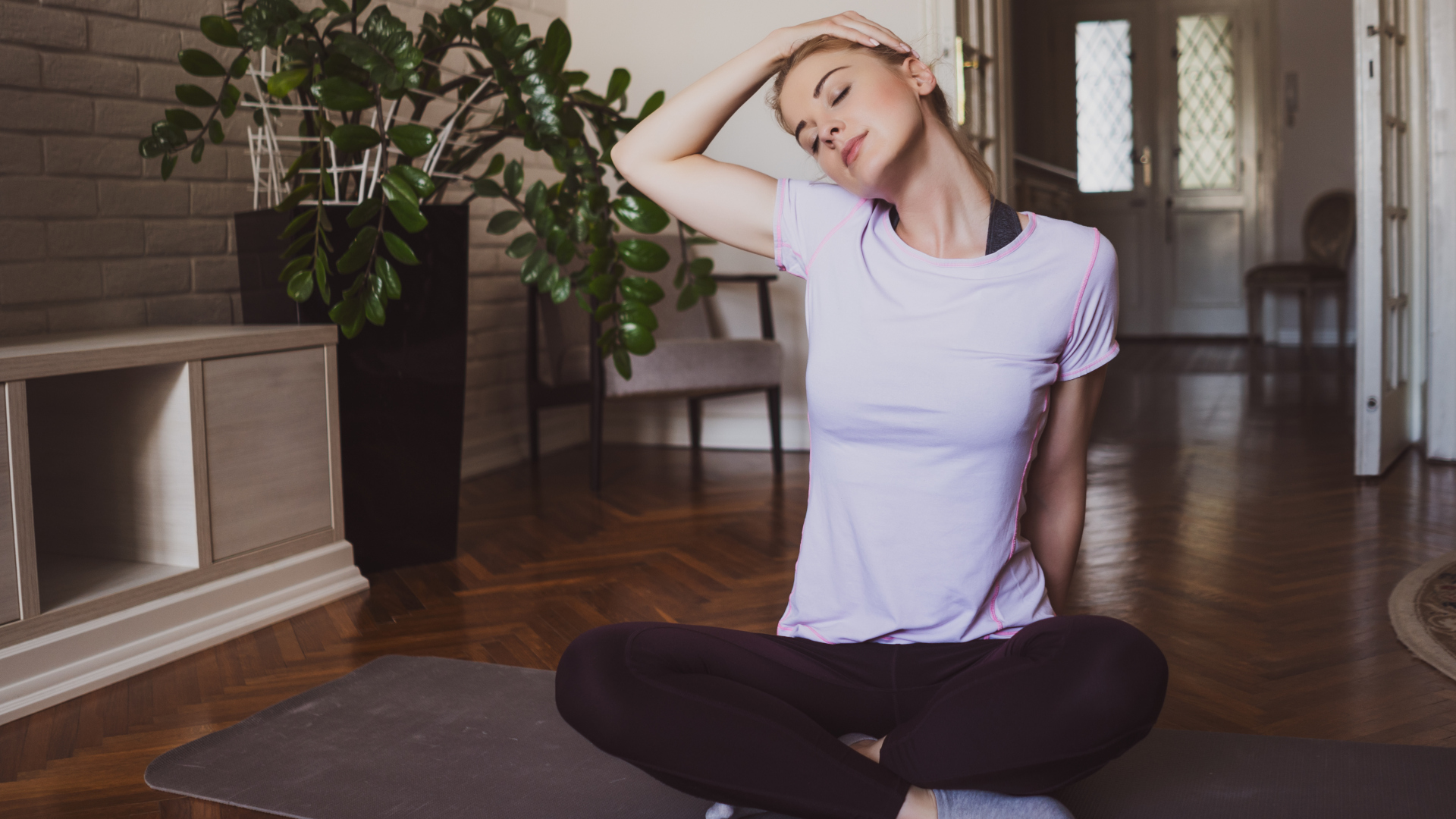
Your trapezius muscles are big muscles that connect your spine and shoulder blades to the base of your skull, and they will be feeling the weight of your backpack, so there’s lots of opportunity to get a stiff neck backpacking. This simple stretch accesses your upper trapezius muscles in your neck and shoulders..
Roll up to a sitting position and place your left hand behind you on the ground. Keeping your left shoulder down, place your right hand on top of your head and gently draw your right ear down towards your right shoulder. Experiment with turning your chin down towards your right shoulder and up towards the sky until you find the sweet spot, and after a few breaths change sides.
6. Eagle arms (30 seconds each side)
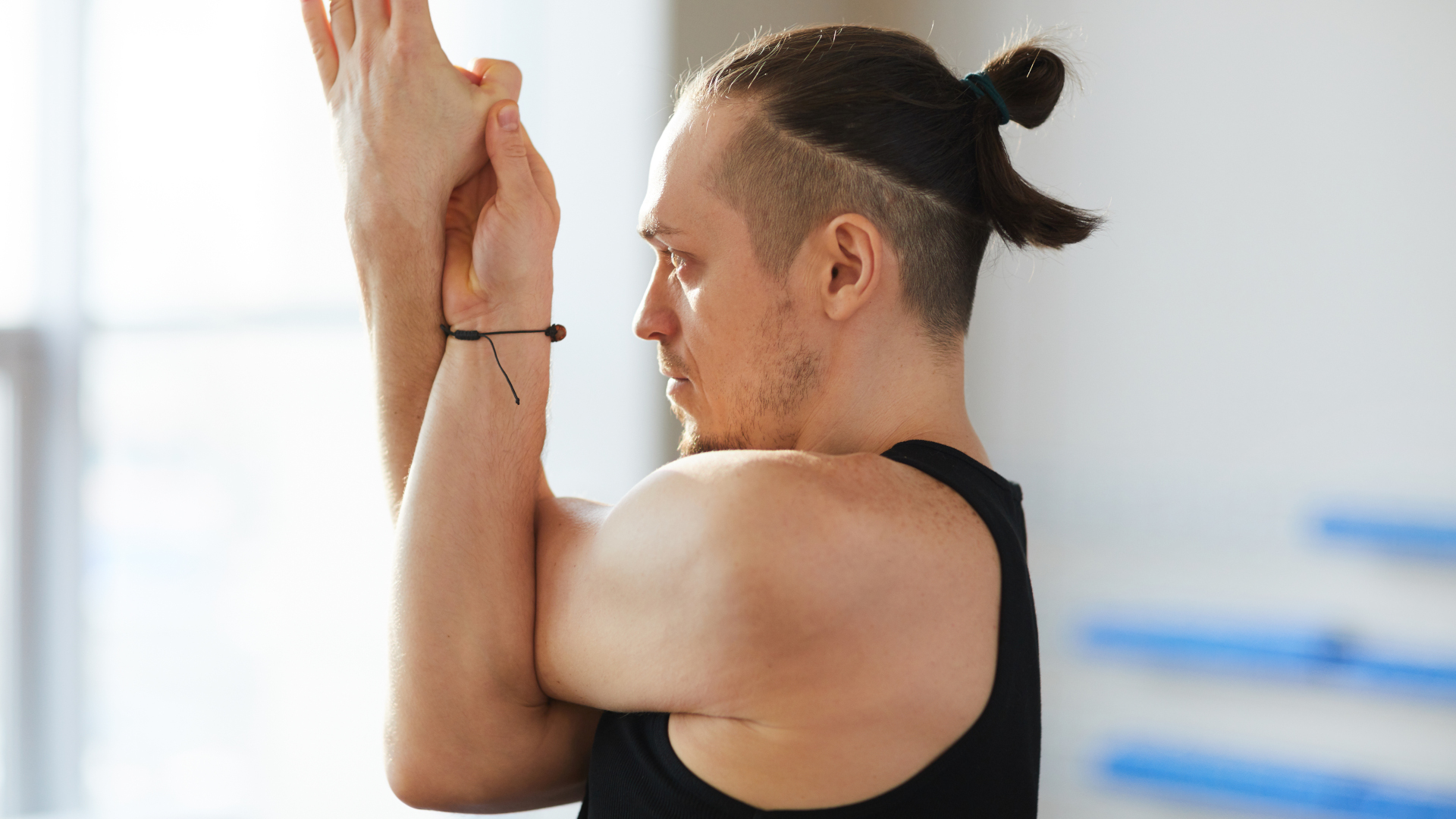
To stretch your lower trapezius muscles, in between your shoulder blades, where you might be feeling some pack ache, stay seated and do eagle arms.
Simply take your arms out wide so they make a cactus shape, then bring your forearms together to touch. Cross your right elbow over your left and either cross your arms again at the wrists and press your palms together, or just press the backs of your hands together. Any amount, lift your elbows up and press your hands forward. Breathe into the space between your shoulder blades, and change sides when you’re ready.
7. Toes pose (1 minute)
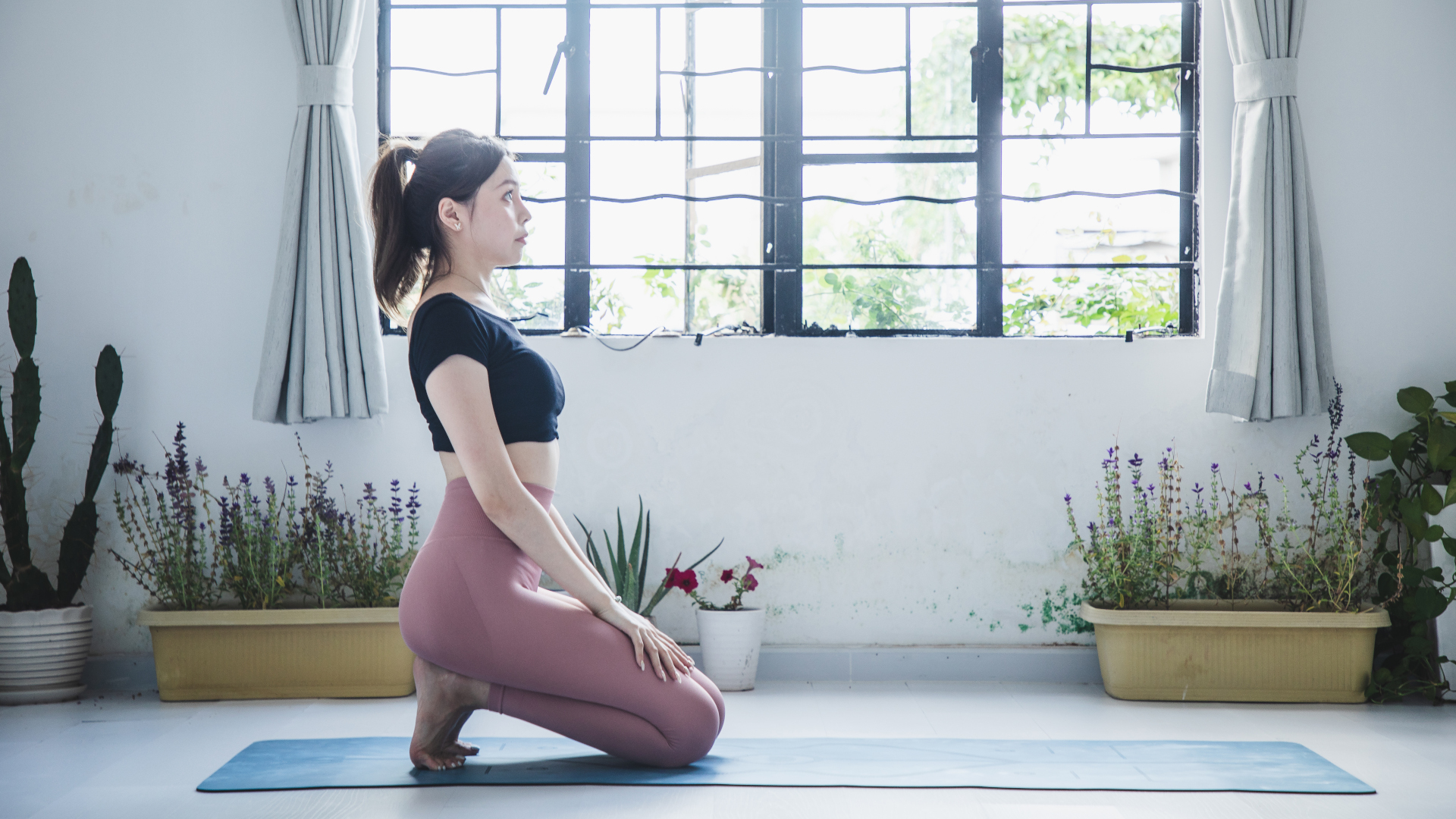
This is a rather intense stretch that does a backpacker’s feet good after covering all that ground in boots.
Move onto your hands and knees, tuck your toes under and slowly sit back on your heels. If your knees object, you can keep your weight a little forward and your hands on the ground, gently pushing into your hands to stretch your feet. If you’re able to, you can sit back on your heels and let your weight descend down to increase the stretch. Your feet probably won’t thank you at the time but they will afterwards. Don’t forget to breathe!
8. Puppy stretch (1 minute)
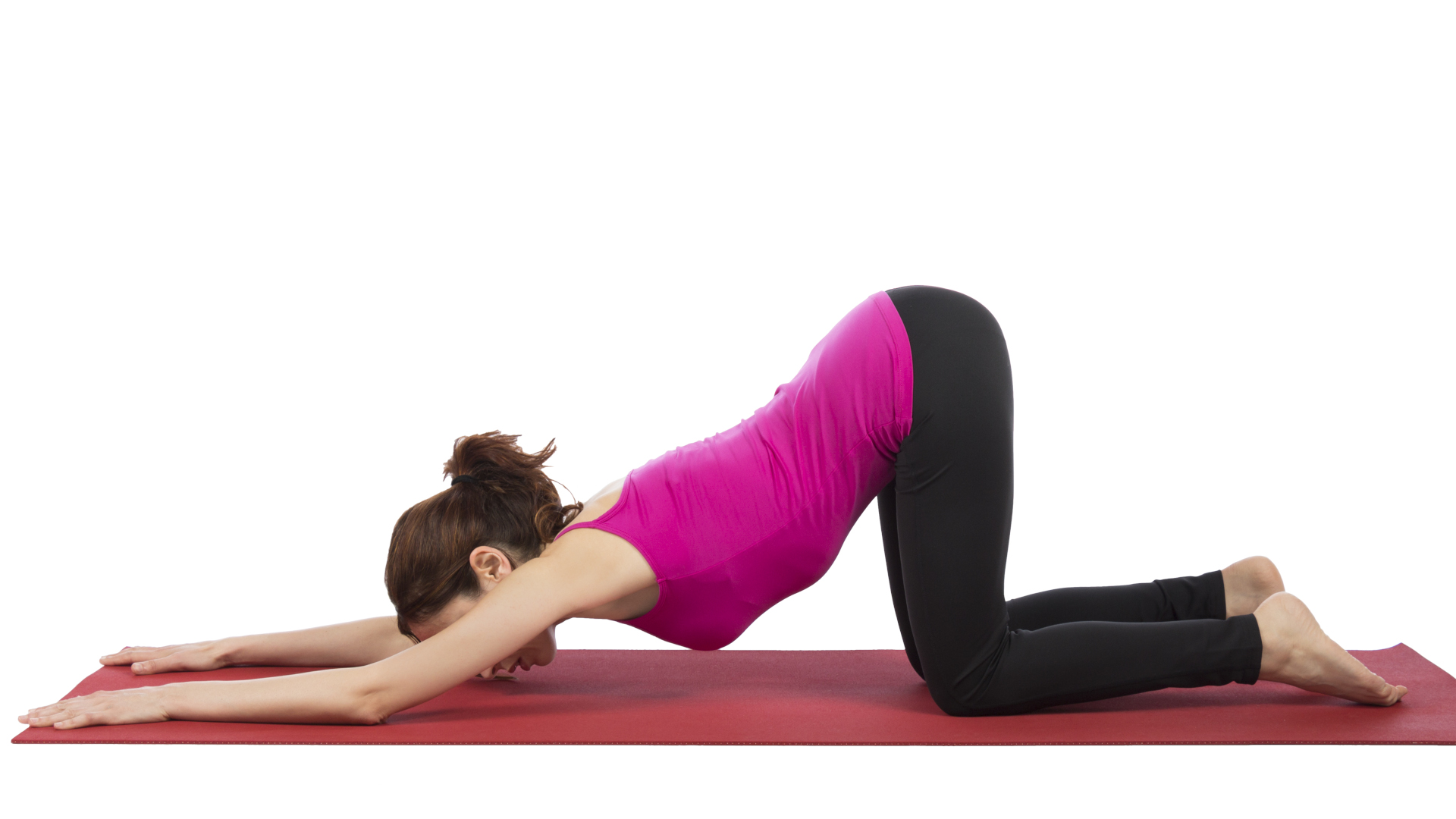
Carrying a pack can cause you to hunch over a bit and round your shoulders, which isn’t great for your shoulders or spine.
Puppy stretch is a great way to stretch out your shoulders, upper back and chest in shoulder flexion. Come back onto your hands and knees, stack your hips over your knees and keep them there as you start to walk your hands forward. Keep your arms straight and at a certain point you can’t go any further without shifting your hips forward. Here, start to sink your chest down towards the ground and rest your forehead or chin on the ground. Your spine will feel a bit like a hammock slung between two trees.
9. Child’s pose (1-3 minutes)
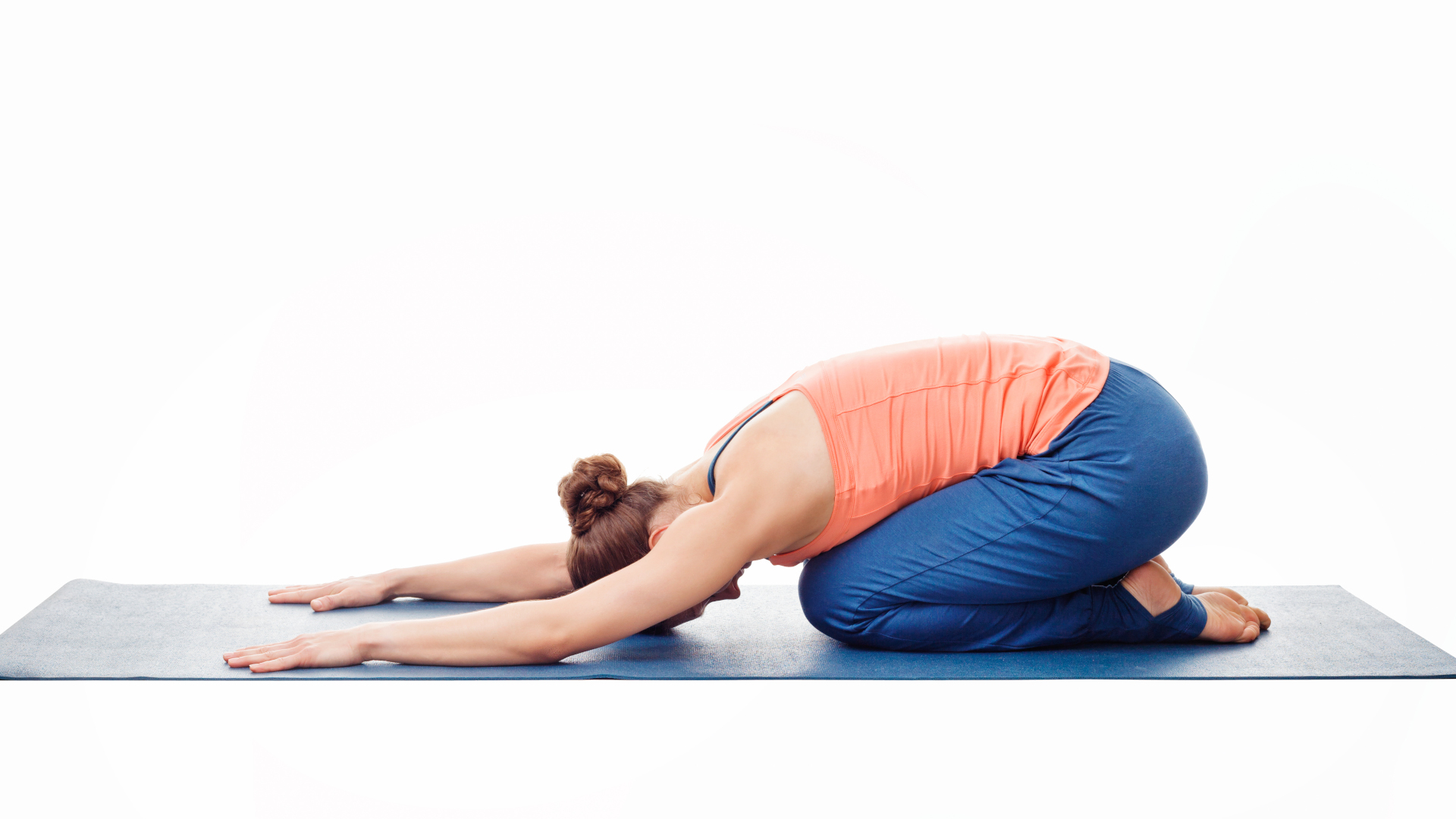
It’s no secret that your quads get a good workout climbing uphill. These muscles on the front of your thighs work to straighten your leg, so you use them every step, and they brace you in eccentric contraction on the downhill which is where they often get sore.
Though there are lots of more complex quad stretches, for backpacking trips a simple, old fashioned Child’s Pose gets the job done. It can be a little easier on the knees than some other poses, and has the added benefits of stretching your glutes, quads and low back. Just press back up to your hands and knees, untuck your toes and sit back towards your heels, placing your forehead on the ground or on your forearms.
10. Downward facing dog (1-2 minutes)
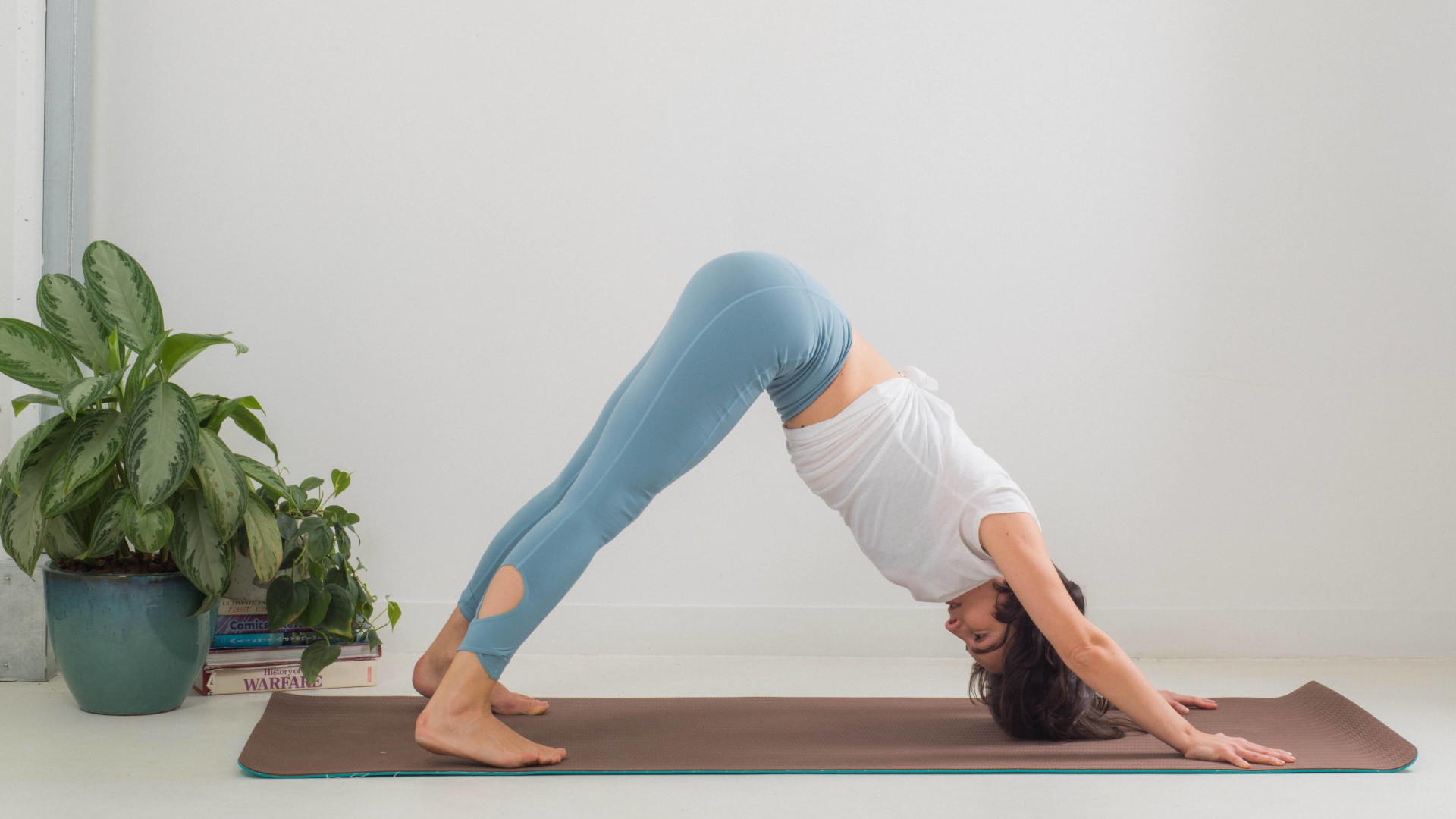
Downward dog is a fantastic way to stretch out your calves, ankles, glutes and hamstrings as well as your shoulders in flexion.
Come on to your hands and knees again but instead of placing your hands under your shoulders, move them about one hand print forward. Curl your toes under then lift your knees up and start to lift your hips up toward the sky making an upside down V-shape with your body. Push your hands forward and down and lift your sitting bones up and back in the opposite direction from your hands. Bend your right knee a little and straighten your left leg, sinking your heel down towards the ground (it doesn't have to touch). After a couple of breaths here, change sides, then alternate a few more times until your calves are happy. If you feel like your legs need more time in Downward facing dog but your arms are tired, take a break in Child’s Pose and then do it again.
When you're finished with downward facing dog, you can lie on your back and rest or just stroll over to your hammock and post up for sunset.
Julia Clarke is a staff writer for Advnture.com and the author of the book Restorative Yoga for Beginners. She loves to explore mountains on foot, bike, skis and belay and then recover on the the yoga mat. Julia graduated with a degree in journalism in 2004 and spent eight years working as a radio presenter in Kansas City, Vermont, Boston and New York City before discovering the joys of the Rocky Mountains. She then detoured west to Colorado and enjoyed 11 years teaching yoga in Vail before returning to her hometown of Glasgow, Scotland in 2020 to focus on family and writing.

